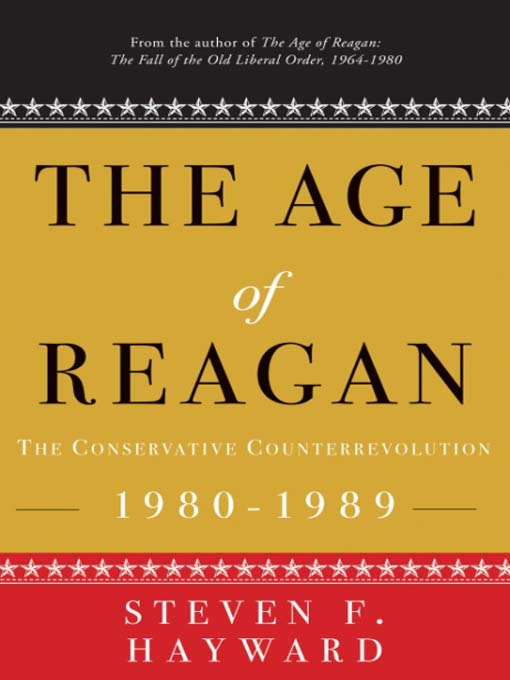
The Age of Reagan
The Conservative Counterrevolution: 1980-1989
کتاب های مرتبط
- اطلاعات
- نقد و بررسی
- دیدگاه کاربران
نقد و بررسی

October 29, 2001
Hayward offers his examination, from an unabashedly conservative perspective, of American history from 1964 through the 1980 inauguration of Ronald Reagan as president, in the first part of a two-volume account. Senior fellow at the conservative Pacific Research Institute for Public Policy, he argues that liberalism reached its peak in 1964, and that the hollowness of liberal thought, played out in the flawed presidencies of Nixon, Ford and Carter, creating a political atmosphere that allowed Reagan to preside over a fundamental change in the direction of American government. In Hayward's Manichean universe, opposite the rightness of Reagan's conservatism is the wrongness of all things liberal. Labeled with the "l word," among many others, are the war on poverty, feminism, the Civil Rights Act of 1964, détente, New Yorker
film critic Pauline Kael, the movie Dr. Strangelove
and the "chattering class" of intellectuals. Hayward forwards many provocative opinions, among them that the Vietnam War was a success, delaying the fall of Saigon long enough to convince Communists that Southeast Asia could not be easily won; Hayward also believes that Watergate was an ideological dispute over whether the executive branch or Congress would have supremacy. The author assembles a wide variety of facts; unfortunately, he often includes them indiscriminately and tediously, as in his minute-by-minute description of the 1976 presidential primary. In the end, this is an ultraconservative polemic masquerading as history.

August 15, 2009
Hayward (American Enterprise Inst.; "The Age of Reagan, 19641980") has modeled his work about one of his heroes on Arthur M. Schlesinger Jr.'s landmark work about one of Reagan's heroes, "The Age of Roosevelt". Like Schlesinger's book on FDR, Hayward's is a multipart, partisan political narrative centered on a momentous presidency. This, his second Reagan volume, shows that, like Schlesinger, he can turn a phrase, but, unfortunately, he can't turn as many as Schlesinger. His regular time-outs to scorn liberals or the "elite media," while often clever, soon seem a distraction. Titling one's history an "Age of" should enforce a certain historical broadness of view. But when Hayward writes that liberals were loud and shrill in their criticism of the 1980s birth of "whole new forms of corporate finance and capital formation," it sounds like praise in 2009. Readers might wonder what other instances of shortsightedness blemish the book. Readers friendly toward Hayward's partisanship will relish all 600-plus pages; others will soon tire of it.
Copyright 2009 Library Journal, LLC Used with permission.

August 1, 2009
From a conservative perspective, Hayward evaluates the Reagan presidency and the opposition it encountered from liberals and sometimes from its supporters. Engaging the Lefts arguments, such as that Reagans tax cuts were unfair or that his foreign policy would lead to war, likely nuclear, Hayward covers their commentary with frequent castigation, for good measure terming the press the adversarial media. On the Right, there were complaints about how Reagan or his appointees deviated from true-blue conservatism by compromising with the Washington, D.C., political establishment. Narrating how events played out on the national political battlegrounds of the 1980son tax cuts, military increases, arms negotiations with the Soviet Union, aid to Nicaraguan contras, and judgeshipsHayward builds to a viewpoint that Reagan was largely consistent in pursuing and achieving his dual goals of reducing the domestic power of the federal government and prevailing in the cold war. A fluidly written history, Haywards work and its ideological anchorage would balance a liberals history, such as Sean Wilentzs The Age of Reagan (2008).(Reprinted with permission of Booklist, copyright 2009, American Library Association.)

























دیدگاه کاربران